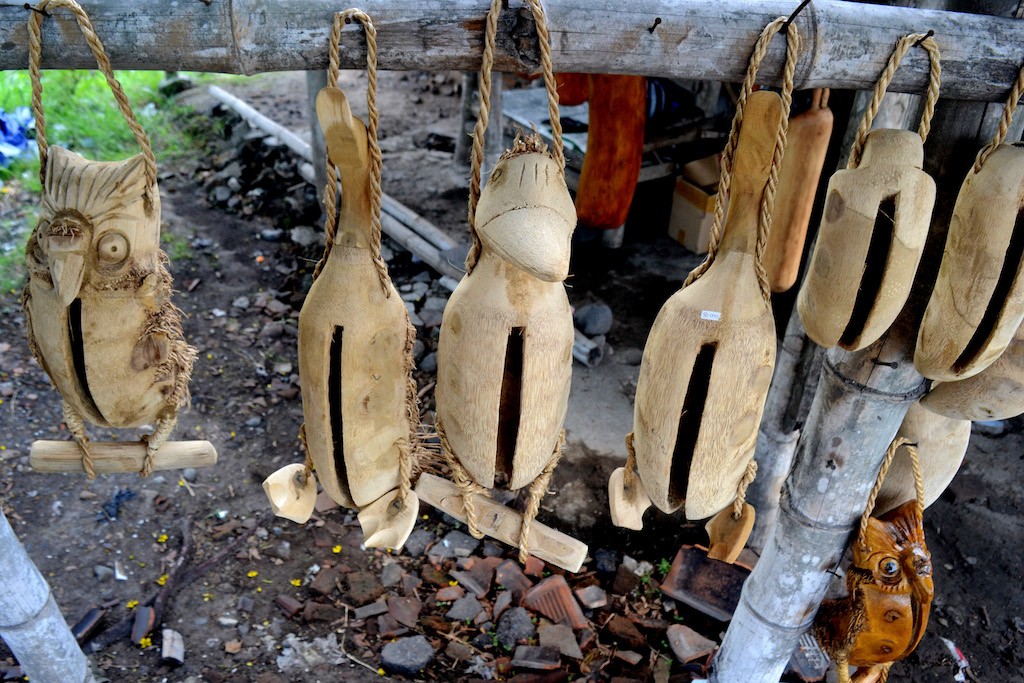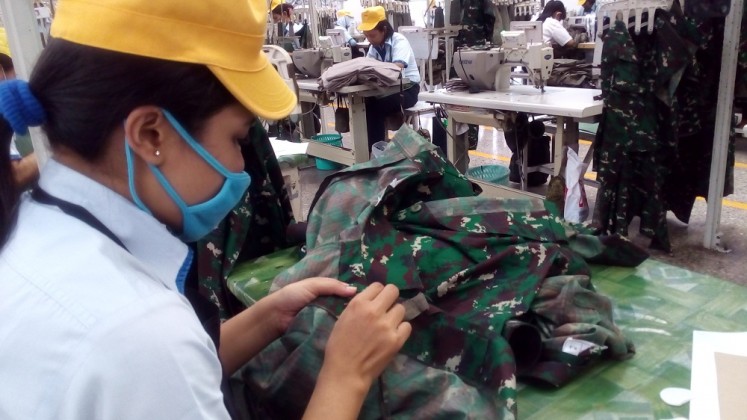Popular Reads
Top Results
Can't find what you're looking for?
View all search resultsPopular Reads
Top Results
Can't find what you're looking for?
View all search resultsRhythmic beats of 'kentongan' live in digital era
Change text size
Gift Premium Articles
to Anyone
T
hose who grew up in the 1980s are perhaps the last generation familiar with the sound of kentongan beaten at night. Kentongan, a slit drum used in traditional villages to communicate, could produce rhythmic beats as a sign that some residents were on duty patrolling the village. The sound of kentongan, therefore, could give a sense of security to village residents at home.
At a time when telephones were rare, sound codes from the beating of kentongan were vital for communicating. Codes coming from security posts or village halls would be passed on by the residents through beating kentongan in the same pattern, until everyone got the message.
The use of kentongan, beginning from the era of the kingdoms of the archipelago, spread to almost all regions in Indonesia. Each region has its own code and meanings for kentongan sound patterns.
In Central Java, kentongan would be beaten in a “Doro Muluk” pattern to mark a safe situation. The beat starts slowly, gradually quickens and slows down again toward the end. However, a rhythm that goes one by one is a sign of murder, two by two is theft, three by three means fire and four by four means natural disaster.
Aside from functioning as a danger alarm, kentongan are also beaten as a sign for residents to gather, an invitation to participate in cleaning up or building something in the village and as a sign that a prayers will start soon.
Kentongan can also function as percussion instruments, usually played alongside other bamboo instruments such as angklung and flute.
Today, communicating through such a traditional method has obviously been replaced by modern technology. Mobile phones with social media are more effective for sending messages and village patrols are now replaced by professional security guards and CCTV cameras. However, the passage of time has not completely buried kentongan away from society. The device is not only considered as a communication tool, but also as a unique handcraft.
Read also: Bamboo architecture: Bali's Green School inspires a global renaissance
Bamboo craftsmen in Jambu Kulon village in Klaten regency are aware of the high demand for kentongan. Kaliso, a 68-year-old craftsman from the village, said that when it comes to kentongan, they sell faster than they are made.
“The demand is high, but the number of craftsmen and the availability of raw materials are not sufficient,” said Kaliso, adding that he could only make 40 pieces in a week and that is when he feels fit and has no orders for other products such as wooden ducks or bamboo ashtrays coming in.
In Jambu Kulon Village, a kentongan is made using a solid base of a bamboo stem. This stump or base part is harder than the upper part of the bamboo. It is able to produce better sound and is more durable. However, bamboo stumps have become rare in the Klaten area. Craftsmen must source raw materials from other regions such as Gemolong, Bojonegoro, Tuban and Sidoharjo.
During the making of kentongan, after the bamboo stump is smoothed and a hole is made to produce sound, it goes into the finishing stage in which a hemp rope is attached so that the kentongan can be hung and is then coated with varnish or paint.
Kentongan and other bamboo craft works are sold in humble stalls at Jambu Kulon village, at the edge of the Surakarta-Yogyakarta highway. They are sold for prices starting at Rp 30,000 (US$2.10). The larger the kentongan, the higher the price.
Recently, kentongan and other bamboo craft works have also become in demand from overseas buyers in Belgium, the United States, the Netherlands and Australia. The item that once functioned as a traditional communication tool is now a desired decorative piece for cafes, resorts and houses around the globe. (vel/mut)











